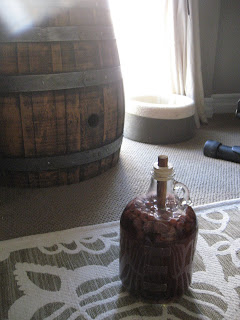This race was another race put on by Equinox Racing Team. And their race report can be found here. If you look all the way at the bottom you'll see Team Kabooze and see we weren't the first to quit but we still only last a bit over 8 hours.
Well the real reason we only lasted 8 hours was because we were badly prepared and we kinda knew that we weren't going to make it the full 24 hours.(Maybe next time).
So we had some great luck and San Diego decided to use one of its 30 rain days of the year. It was fine as we started because it was only a mist but it picked up throughout the day and made everything much more difficult. They also had to cancel the kayak portion of the race due to the weather so we started out with a good jog by the beach. It started out well, meaning we weren't immediately in last place.
We got back to the start point which was near Torrey Pines State Beach and then we took off on our bikes toward Black Mountain. We followed the 56 all the way out. We got to the next transition point and started the trekking portion.
 PJ needed to lighten his load and as a group we needed to live up to our team name. So out came the tallboy of refreshing nectar and some slimjims and bananas. What do you typically eat during an adventure race?
PJ needed to lighten his load and as a group we needed to live up to our team name. So out came the tallboy of refreshing nectar and some slimjims and bananas. What do you typically eat during an adventure race? Almost immedietely after starting the trekking it started raining much harder. In my defense I imformed both of my teammates of the weather and the scope of the adventure race. Neither of them decided to bring anything waterproof and PJ was wearing Vans slip-ons (but they were camo-style). So PJ's solution to the waterproof jacket was a flannel and some garbage bags. And CJ had a windbreaker. Well as soon as it started raining they whipped out the garbage bags and realized they were for waste baskets.
Almost immedietely after starting the trekking it started raining much harder. In my defense I imformed both of my teammates of the weather and the scope of the adventure race. Neither of them decided to bring anything waterproof and PJ was wearing Vans slip-ons (but they were camo-style). So PJ's solution to the waterproof jacket was a flannel and some garbage bags. And CJ had a windbreaker. Well as soon as it started raining they whipped out the garbage bags and realized they were for waste baskets.So from this point on these guys were pretty sad and very wet. We kept trucking on and made our way up, down and around Black Mountain. We did stop at an Elementary school for a bit of lunch and to ensure we were in last place. It was a big emotional boost to get out of the rain for a bit.
We finally made it back to transition but we were done. Well not really we had to ride back to Torrey Pines where our car was. That was a fun, dark ride. The quote of the race came about then, PJ (6'4" - 260 lb rugby player) - "I am going to shivvvvvvver right off my bike".
All was good when we drove up the coast to have a few beers and burritos at Las Olas

































